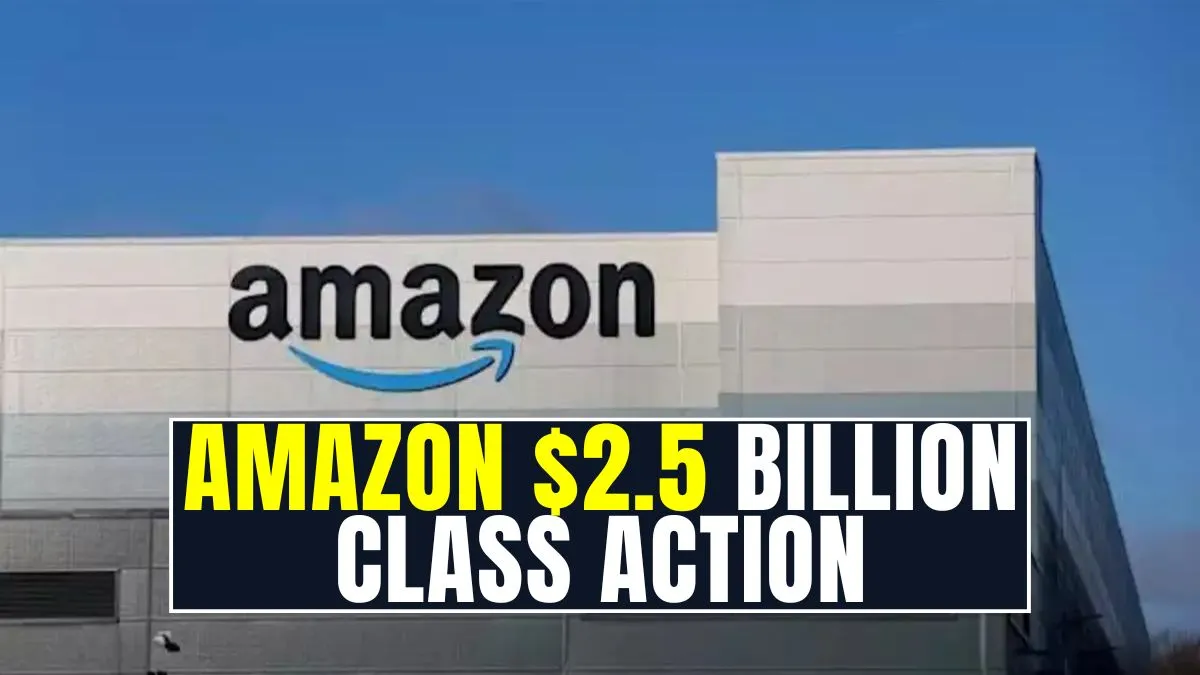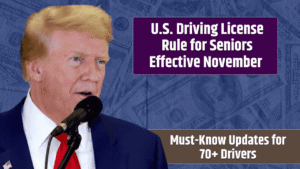Join on WhatsApp
Get the latest updates directly on WhatsApp – motivation, news & more!
In September 2025, Amazon entered the spotlight after the Federal Trade Commission (FTC) secured a historic $2.5 billion settlement against the tech giant. At the heart of this deal is Amazon Prime—a subscription service millions of Americans use for shopping, entertainment, and everyday delivery benefits. The FTC’s case focused on Amazon’s alleged use of “dark pattern” design tactics that allegedly coerced users into subscribing to Prime unintentionally and made cancellations difficult, violating consumer protection standards. Of the settlement, $1.5 billion is reserved for customer refunds and $1 billion as civil penalties. Around 35 million U.S. Prime members are expected to qualify for a refund. Here’s what affected users need to know to claim their money.
Why Was the Amazon Settlement Necessary?
The FTC’s investigation found Amazon used misleading prompts, hidden pricing, and overly complex cancellation procedures to retain Prime subscribers. Specifically, the agency cited:
- Pre-selected options nudging users into Prime sign-ups
- Opaque fee and renewal term disclosures
- Multi-step, confusing cancellation routes
While Amazon has not admitted liability, the settlement obligates the company to simplify its Prime user interface, clarify terms, and streamline the cancellation process moving forward. A visible “Reject Prime” and improved “Cancel Membership” button will now appear, promoting real customer choice.
Who Is Eligible for a Refund in 2025?
Refund eligibility applies exclusively to U.S.-based Amazon customers who enrolled in or attempted to cancel a Prime membership between June 23, 2019, and June 23, 2025. There are two routes for compensation, depending on subscription history and membership activity:
| Eligibility Type | Criteria | Refund Process | Maximum Amount |
|---|---|---|---|
| Automatic Refund | Enrolled via “challenged” Prime sign-up AND used ≤3 benefits in 12 months | Credited by Amazon automatically within 90 days | Up to $51 |
| Claim-Based Refund | Attempted to cancel or used ≤10 benefits in 12 months | Claim form required | Up to $51 |
Eligibility is determined by Amazon’s records and activity logs. Those who meet the “automatic refund” tier will see payouts without filing paperwork. Others must follow the claims process to ensure payment.
How Refunds Will Be Distributed
Refunds follow a two-stage process:
Stage 1: Automatic Refunds
Amazon will proactively issue refunds to eligible Prime members using their account payment method. This process is expected to complete within 90 days after court and FTC approval. No action is needed—just watch for notifications or direct credits.
Stage 2: Claim-Based Refunds
If you don’t receive an automatic refund, but your Prime activity matches the criteria:
- Look for emails or letters from Amazon and the FTC with claim instructions.
- Complete the claim form via Amazon’s dedicated refund portal, mail, or email.
- Submit before the 180-day deadline after official notice.
- Refunds will be paid to your registered payment method or by check.
Refund limits per customer stand at $51, though if the $1.5 billion fund is oversubscribed, individual awards could be proportionally reduced.
How U.S. Consumers Can Claim Their Money
To ensure you receive any eligible refund:
- Log in to your Amazon account and verify membership history using the “Memberships & Subscriptions” dashboard.
- Check your activity dates for purchases and cancellations from June 23, 2019, to June 23, 2025.
- Review your email for official notices about the settlement and next steps.
- If applying for a claim-based refund, retain all email confirmations and documents for your records.
Remember, refunds will be issued solely to U.S. Prime members and will be delivered as account credits, original payment refunds, or checks. Reach out to Amazon customer service or visit the FTC’s official settlement page for authoritative announcements.
Amazon’s New Responsibilities Under FTC Oversight
Amazon’s acceptance of the settlement mandates several immediate and long-term changes:
- The Prime cancellation process is now minimal, requiring only a few clear steps.
- Renewal terms and pricing are displayed transparently during sign-up and checkout.
- A “Reject Prime” button is present alongside every prompt for subscription.
- Yearly compliance reports will be submitted to the FTC for regulatory review.
These measures are intended to restore consumer trust and eliminate tactics that led to subscriber frustration and financial loss.
Important Limitations to Note
- Refund Cap: Only up to $51 per eligible customer
- Geography: U.S. Prime members only
- Timeframe: Qualifying activity from June 23, 2019, through June 23, 2025
- Oversubscription: If total claims exceed the refund pool, payments will be reduced
Amazon maintains it has not admitted legal fault but will adopt new standards for transparency, compliance, and user control.
What Should Consumers Do Now?
- Monitor: Track your payment methods, Prime status, and FTC/Amazon correspondence.
- Respond: Follow instructions from Amazon and the FTC for claim-based refunds.
- Stay Updated: Official news and refund information will be published on FTC and Amazon help portals.
Why This Case Matters
The Amazon $2.5 billion class action is more than a payout—it’s a precedent-setting move that underscores consumer rights in the digital marketplace. With FTC oversight, giants like Amazon will be compelled to ensure fair subscription practices, easy cancellation, and genuine transparency.
Eligible users should check their history, act on settlement notices, and make sure to file a claim swiftly—securing their refund and asserting their right to honest marketplace treatment in 2025 and beyond.




